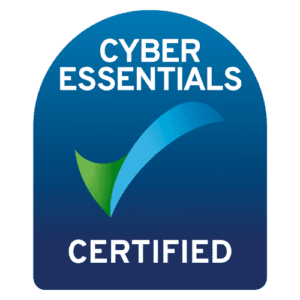In the rapidly evolving world of IT, managing diverse ecosystems of users, devices, and platforms often proves a daunting challenge. The addition of each new element introduces more tools, scripts, and skills, leading to a fragmentation that hampers efficiency and widens skill gaps.
However, this complexity is not insurmountable. Embracing a unified approach can turn this tangled web into a streamlined digital ecosystem, thereby improving efficiency and fortifying security.
In this blog, we explore how JumpCloud can serve as the linchpin for this transformative journey. By unifying the diverse array of Identity, Access, and Device Management tools currently scattered across your infrastructure, JumpCloud instills order amidst the chaos. So, let’s delve into how we can unlock the promise of a leaner, more efficient IT landscape together.
Centralised Identity and Access Management (IAM)
Central to JumpCloud’s effectiveness is its robust Identity and Access Management (IAM) capabilities. Instead of grappling with disparate systems, applications, and devices, JumpCloud provides a unified platform for comprehensive user management.
With JumpCloud, the time-consuming tasks of user provisioning, deprovisioning, and access control can be handled from a single console, doing away with the need for multiple tools. This streamlined approach not only reduces complexity but also frees up valuable time and effort for IT administrators.
Furthermore, JumpCloud can seamlessly integrate with HR tools like Workday and BambooHR, aligning IT operations with employee onboarding and offboarding processes. This integration eliminates the need for IT to independently manage these activities, making for a more efficient, coordinated approach to IAM.
Modern Authentication and Single Sign-On (SSO):
JumpCloud revolutionises the authentication process by enabling users to access a myriad of applications and systems using a single set of credentials. This forward-thinking approach eradicates the need for remembering and managing an array of passwords, thereby alleviating IT support load and boosting user productivity.
JumpCloud’s Single Sign-On (SSO) is a game-changer for IT teams, as it offers rapid web-based authentication to any application using industry-standard protocols such as OAuth, SAML, and LDAP. This level of efficiency and security enhances operational flow, creating a more streamlined and productive work environment.
Directory Services Integration
JumpCloud integrates seamlessly with existing directory services like Microsoft Active Directory (AD), Azure Active Directory (AAD), Open Directory, and indeed any directory that utilises the LDAP protocol.
JumpCloud’s flexible design allows it to either replace these directories with a unified online service or function as a supplementary layer, bolstering their existing capabilities. This powerful platform enables IT administrators to extend user identities and access controls from the conventional on-premises environment to encompass cloud-based applications and resources.
Such integration eradicates the need for additional tools to bridge the divide between on-premises and cloud-based systems. Furthermore, JumpCloud streamlines the synchronisation of user and group data between directories, significantly reducing management time and creating a more efficient IT infrastructure.
Device Management
JumpCloud’s device management capabilities provide a unified solution to manage the complexities of diverse operating systems and device types, whether they are within the network perimeter or beyond.
With JumpCloud, IT teams can create an asset inventory, offer remote assistance, and manage and configure devices remotely. They can enforce security policies, deploy software applications, and handle both operating system and application updates, all from a centralised console.
By eliminating the need for disparate device management tools, JumpCloud significantly reduces complexity and strengthens control over the entire device lifecycle. This consolidated approach not only boosts efficiency but also contributes to a robust and responsive IT infrastructure.
JumpCloud’s command execution feature allows IT administrators to remotely execute commands or scripts across all managed systems, which can be used to deploy any item of configuration or software.
Security and Compliance
JumpCloud notably strengthens security and compliance measures. It empowers IT teams to implement a comprehensive Zero Trust Access Model, through strong password policies, multi-factor authentication (MFA), and conditional access policies for any service utilising JumpCloud’s authentication services.
Device Security Policies enforced by IT administrators, such as full disk encryption, firewall settings, and screen lock timeouts, ensure device security, irrespective of location.
JumpCloud’s RADIUS-as-a-Service offers secure network access control, authenticating users before allowing access to the network, thereby reducing unauthorized access and network breaches. This can be configured for any Wi-Fi or VPN gateway.
The System Insights feature of JumpCloud provides in-depth visibility into the hardware, software, and network configurations of managed devices, information critical for maintaining security, planning updates, and facilitating compliance audits.
Moreover, JumpCloud enhances security and accountability by facilitating the creation of access request and approval workflows. This ensures users gain access only to necessary resources, thereby streamlining operations and enhancing overall security.
Conclusion
Navigating a sea of diverse IT tools need not be overwhelming. With JumpCloud, IT departments find a central hub that merges critical components such as Identity and Access Management, Single Sign-On, Directory Services Integration, Device Management, and Security/Compliance.
JumpCloud simplifies the IT landscape, offering an efficient, centralized console for IT teams to manage a broad array of tasks. Its robust security and compliance features ensure businesses can streamline processes while enhancing digital defenses and meeting regulatory requirements.
In essence, adopting JumpCloud means transitioning from chaos to order, and complexity to simplicity. It paves the way for a future where IT management is less about juggling different tools, and more about streamlined, secure operations.
